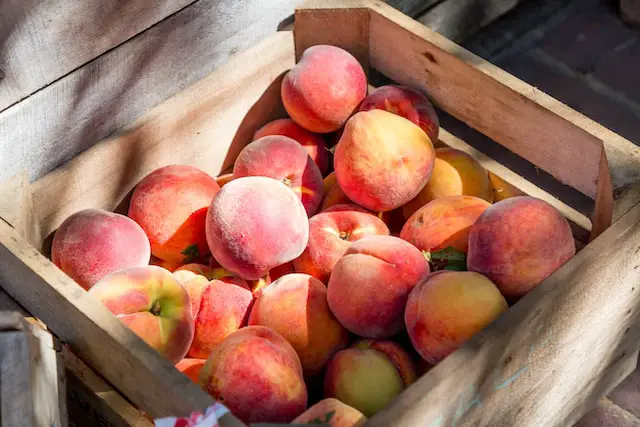
Peaches are the epitome of summer – there’s nothing quite like biting into a sweet, juicy peach on a hot day. Peaches may be associated with the warmth of summer, but they actually need a significant period of cold (“chill hours”) in order to produce fruit.
Areas with warm winters could have trouble growing peach trees, but some cultivars are well suited to milder climates. So which peach tree varieties need the least amount of winter chill?
The best peach varieties for mild climates are those that need less than 650 winter chill hours. Top low-chill peach cultivars include: ‘FlordaPrince’, ‘TropicBeauty’, ‘Desert Gold’ (less than 250 hours); ‘Gulf Prince’, ‘Champagne’ (250-400 hours); ‘Bonanza’, ‘Suwanee’ (400-650 hours).
Luckily, in recent decades, breeders have developed many new peach cultivars that were bred to thrive in warm climates (find out more about how to grow peach trees in hot areas here). Continue reading for everything you need to know about chill hours for peach trees, including the best low-chill varieties to grow in your home orchard.
What are Chill Hours?
Simply put, chill hours – also called “chill units” or CUs – are the number of hours at or below 45°F (or, more accurately, between 32°F and 45°F). The concept of chill hours is more complicated than it may seem at first, as scientists still debate what is the most helpful way to measure CUs. Researchers are also working to understand exactly how the duration of cold weather affects plants and what happens during dormancy.
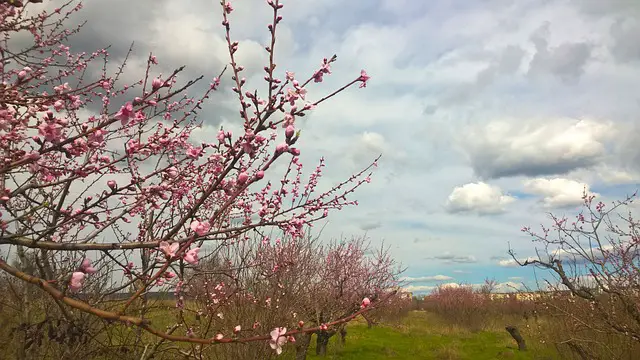
There are many ways that average chill hours can be determined. One of the most commonly accepted models is where one chill unit (CU) equals an hour of air temperature between 32°F and 45°F, minus any hours above 60°F. The resulting number is the number of chill hours for that area, which is then averaged over several years.
Why do Peach Trees Have Chill Hour Requirements?
Peach trees, as well as many other fruits, must experience a certain amount of cold to produce fruit. Dropping temperatures and lengthening nights in the fall and early winter signal the plant to go into dormancy (a period where growth suspends). It’s like nature’s antifreeze – the plant goes through physical changes that allow the cells to survive extreme cold.
Once the peach tree has experienced enough cold, the warming soil in spring triggers a hormonal response that causes it to start growing again. The buds break, open, flower, and eventually fruit.
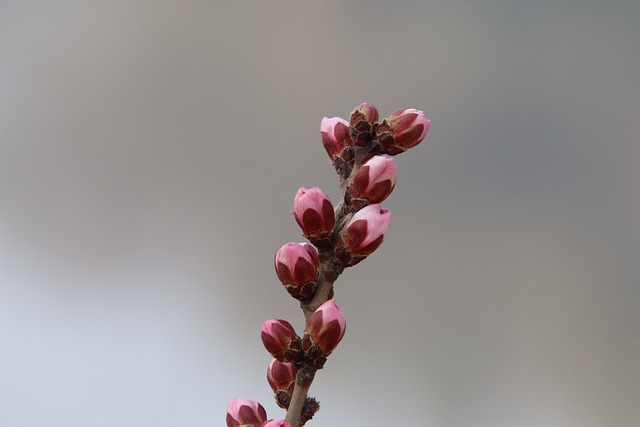
If you choose a peach cultivar that needs MORE chill hours than your area provides, then it will break dormancy too late and never blossom or set fruit. If your peach variety needs far FEWER chilling hours than is common for the climate, then the tree will bloom too early and be damaged by frost.
A loss 50 or 100 chill hours in either direction (too many or too few) could reduce the peach harvest by about half. A discrepancy of 200 or more hours means no crop at all. The exact amount of chill hours in any given year will vary, so it’s recommended to choose a peach variety with chill hours within 100 hours of the average for your area.
You may be able to take advantage of small microclimates in your yard to plant peach varieties with different chilling requirements. An area near a wall or fence, for example, may shelter the tree from strong winds or trap heat from the sun, causing the tree to break dormancy a little earlier and have a slightly longer growing season.
How do I Find Average Chill Hours for My Area?
The most reliable way to determine the average chill hours for your location is to contact a nearby county extension service. Chill hours vary greatly depending on topography and weather patterns, even within the same growing zone, so they must be calculated for each local area.
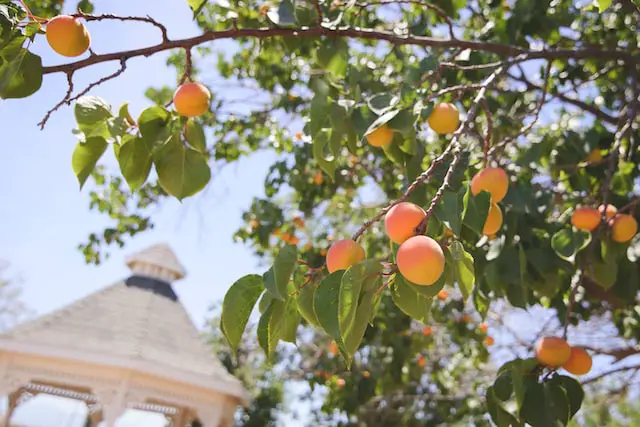
County extension services work closely with gardening experts to provide data and local gardening information, often including average chill hours. They are a goldmine of resources that are relevant to gardening in your area.
Visit this site to find your nearest extension office by zip code. To find which universities partner with the National Institute of Food and Agriculture, and to access those resources, visit the NIFA College Partners Directory.
You can also find maps showing average chill hours for many states, particularly those with warmer climates (such as Texas, Georgia, Florida, California, etc.). Search for “chill hour map [your state],” or visit this site to see a rough map of chill hour averages across the United States. Keep in mind that the information on these maps will not be as accurate as that from a local extension office.
Knowing your USDA growing zone, while important, is not enough information to determine the right peach variety for your area. Zone 9 in the Pacific Northwest will be completely different than zone 9 in Texas. Chill hours are affected by climate and topography, such as elevation, bodies of water, winds, exposure, and other environmental factors.
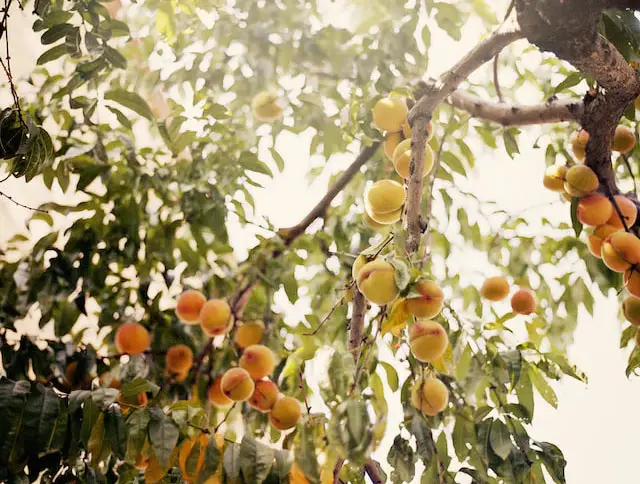
Low-Chill Peach Varieties
Thanks to the work of horticulturalists and plant geneticists, many delicious peach cultivars exist with extremely low chill requirements. Below is a list we’ve curated with some of the best varieties to grow in mild winter climates. (Check out “The Best Peach Varieties for Fresh Eating” for even more recommendations.)
| Variety | Flesh Color | Cling/Freestone | Chill Hours |
|---|---|---|---|
| VERY LOW CHILL (250 Hours or Less): | |||
| ‘UF Best’ | yellow | semi-cling | 100-150 |
| ‘UF Sun’ | yellow | semi-cling | 100-150 |
| ‘Tropic Beauty’ | yellow | semi-free | 150 |
| ‘FlordaGLO’ | white | semi-cling | 150 |
| ‘TropicPrince’ | yellow | semi-free | 150 |
| ‘TropicBeauty’ | yellow | semi-free | 150 |
| ‘FloridaPrince’ | yellow | semi-free | 150 |
| ‘Eva’s Pride’ | yellow | cling | 100-200 |
| ‘May Pride’ | yellow/red | semi-free | 150-200 |
| ‘Tropic Snow’ | white | free | 200 |
| ‘Santa Barbara’ | yellow | free | 200-300 |
| ‘Babcock’ | white | free | 200-300 |
| ‘Saturn’ | yellow | free | 200-300 |
| ‘Bonita’ | yellow | free | < 250 |
| ‘Desert Gold’ | yellow | semi-free | 250 |
| ‘Mid Pride’ | yellow | free | 250 |
| ‘Red Baron’ | yellow | free | 250 |
| LOW CHILL (250-400 Hours): | |||
| ‘Southern Rose’ | yellow | free | 250-350 |
| ‘August Pride’ | yellow | free | < 300 |
| ‘Earligrande’ | yellow | semi-free | 300 |
| ‘FlordaCrest’ | yellow | semi-cling | 375 |
| ‘Gulf King’ | yellow | cling | 350-400 |
| ‘Champagne’ | white | semi-free | 400 |
| ‘Gulf Crimson’ | yellow | cling | 400 |
| ‘GulfPrince’ | yellow | semi-free | 400 |
| ‘FlordaKing’ | yellow | cling | 450 |
| ‘TexKing’ | yellow | cling | 450 |
| ‘TexStar’ | yellow | semi-free | 450 |
| MEDIUM CHILL (400-650 Hours): | |||
| ‘Strawberry Free’ | white | free | 350-500 |
| ‘Bonanza’ | yellow | free | 450 |
| ‘Rio Grande’ | yellow | free | 450 |
| ‘TexPrince’ | yellow | free | 550 |
| ‘TexRoyal’ | yellow | free | 600 |
| ‘Early Elberta’ | yellow | free | 600-700 |
| ‘Tropi-Berta’ | yellow | cling | 600 |
| ‘La Feliciana’ | yellow | free | 600 |
| ‘June Prince’ | yellow | semi-free | 650 |
| ‘Southern Pearl’ | white | free | 650 |
| ‘Suwanee’ | yellow | free | 650 |
| ‘Junegold’ | yellow | cling | 650 |
